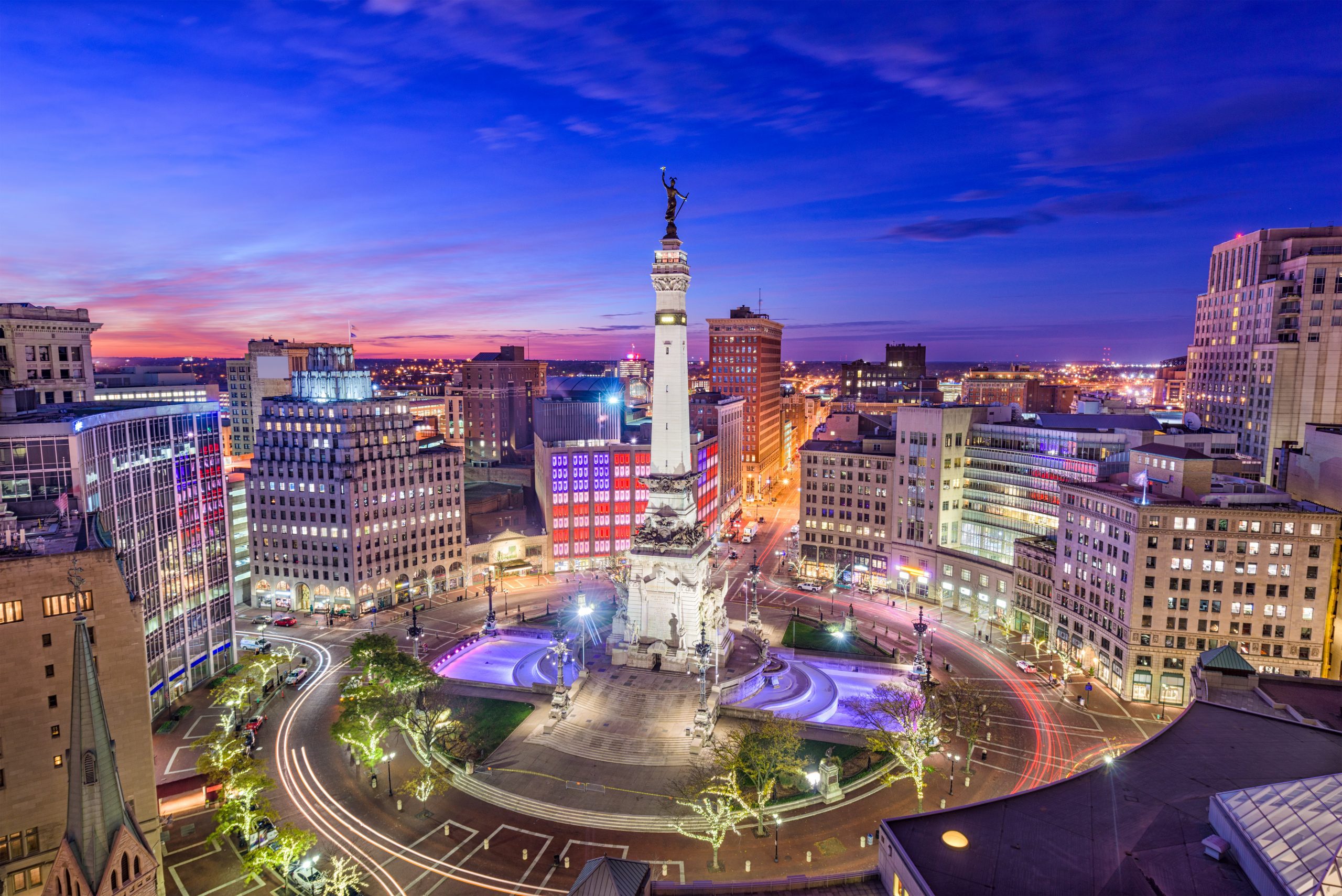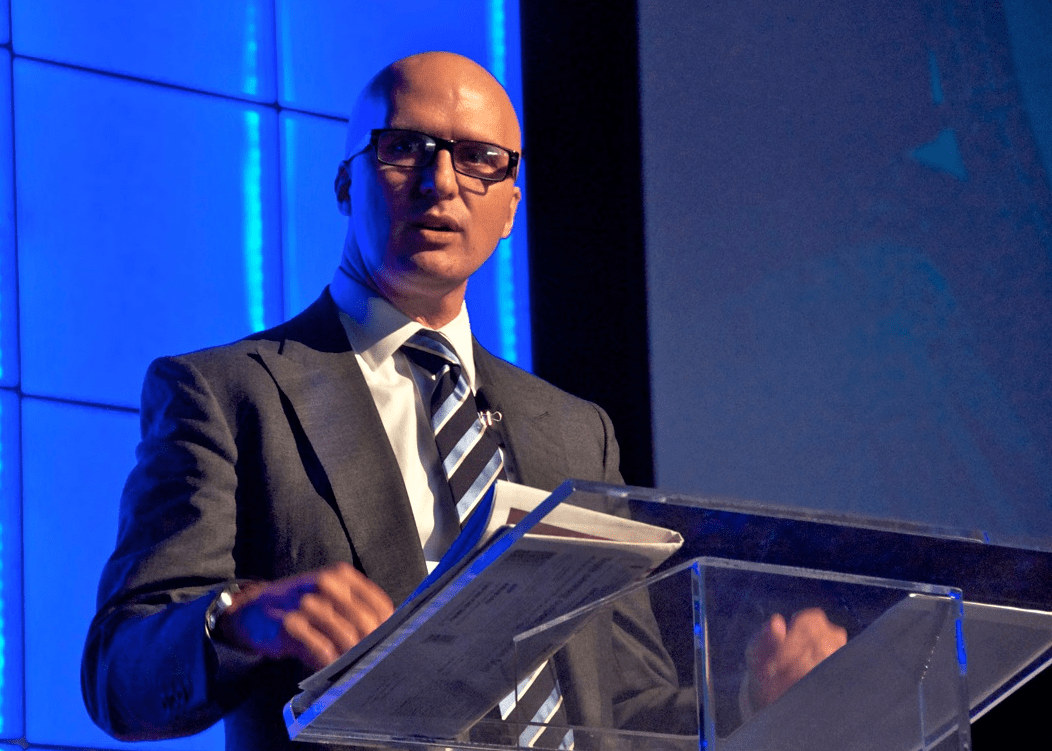Why This New Yorker Returned to the Midwest

Editor’s Note: Before the pandemic changed the urban landscape of American life, the last two decades have seen a familiar dynamic: the coastal cities have recorded dramatic increases of wealth as highly-educated workers concentrate in a few major metro areas, including New York, San Francisco, and Washington. At the same time, much of Heartland America has seen comparatively slower growth, but some places are economically resilient and affordable, such as Columbus, Des Moines, Kansas City, and Indianapolis. So are some people ready to leave a prosperous coastal city and seek a better deal in the Midwest?
Aaron Renn, a longtime analyst of urban trends, did just that—he recently left New York City for the Hoosier state. Renn made the move to Indianapolis a few months ago, only a short time before the coronavirus storm. This week New Urbs editor Lewis McCrary asked Renn why he made the move, what portends for the Midwestern economy these days, and what he is working on in Indianapolis. A contributing editor at City Journal and author of The Urban State of Mind, Renn also recently launched Heartland Intelligence, a newsletter that aims to understand the regional economy.
Why did you leave New York City and move to Indianapolis?
It was a difficult decision because I love both cities and so does my wife. They are both great though in different ways obviously. When a fellowship ended in NYC I had to make a decision about what to do next. When I had moved to New York I was single but by this point I was married with a two-year-old. My wife and I are both from Indiana and our parents are here. As with many others who’ve made the same kind of move at the same time, it was a good time to be closer to family and where we can have more space.
Of course in light of the coronavirus, moving to Indy looks like a smart move at present. It’s much better staying at home when that home is a single-family house with a front porch and a backyard.

If I had unlimited funds, I’d probably keep a place in both cities. So yes, more money would have allowed us to stay in New York in a sense. But as importantly even with more money I’d still want us to be in Indianapolis as well. Indy is better today than at any time in it’s past and only continuing to go up. It’s great to be a part of not just what it is but what it is becoming.
Indy has been trying to take on more urban characteristics, especially immediately adjacent to downtown? Will that trend continue, and is Indiana still economically competitive?
Indianapolis is definitely seeing more high-density infill, even outside of downtown. But the “killer app” for the city is the single-family home. This is a place where you can not just live in a one-bedroom apartment after you graduate from college, but where you can acquire a real home with a yard, etc. and stay for your entire life. So the kinds of question marks people are putting over some of these other cities’ urban cores does not apply as much here where growing up does not necessarily mean moving out.
Indiana is not a single economy so it’s hard to talk about the state itself as competitive or not. There are places in Indiana that have a lot of challenges but also ones that are doing quite well, like Columbus and Lafayette. The Indianapolis region has the talent pool, quality of life, amenities, scale, and a cost profile that makes it competitive with many of the Sunbelt boomtowns (and better in some respects). I think there are a number of Midwestern cities in this category that are potentially ready to break out. They have not yet found a way to break through to the next level and become national rather than merely regional draws. That’s their and our to-do.
Will the coronavirus be a blip, with most of the development trends continuing in the same direction? Or will we see any fundamental change in these patterns (reshoring manufacturing, slower commercial real estate, remote work)?
It’s impossible to predict what will happen as a result of the coronavirus. Severe contractions tend to produce a shakeout that strengthens the already strong. But I do think there’s a window of vulnerability for some of these large, expensive, dense, transit-dependent coastal markets, and especially New York. Long run I would never bet against New York, but they are going to experience some near term turbulence.
I do think there will be some increase in remote work, though it’s unclear how extensive that will be. This will increase the importance of place in attracting talent. If you look at where the top locations for working from home are, they tend to be places that are existing talent magnets or resort/retirement type communities. The top work from home share, for example, is in Boulder. People use remote work as a tool to give them the flexibility to live in a location of choice.
How do you define the “heartland,” versus the Rust Belt? And why do you focus on that region in your new Heartland Intelligence newsletter?
The area I cover is basically the Great Plains, Midwest, and the western portions of New York and Pennsylvania, along with similar post-industrial locations in New England. I started writing about the Midwest over a decade ago because it was a region that got very little love and attention. In part that’s because the media centers are on the coasts. There was very little indigenous R&D in terms of people in this region thinking about its unique situation on its own merits, rather than relative to coastal norms. Back then everybody was saying cities need to be more like Portland, treating that city as the norm or apex of what smaller urban regions should be. But the Heartland is completely different in most respects from Portland or other places on the coasts. The cities and towns of this region need to find a way to be the best version of what they are, not a second rate imitation of what they are not.
Unfortunately, while there’s been some improvement in this area, the Heartland remains too dependent on imported thinking. Many of the best local voices like Pete Saunders, Jason Segedy, and Lee Bey don’t have nearly as much major institutional backing or as high a profile as they deserve. Some of that is the Heartland’s own fault.
I’ve always tried to provide that perspective on these issues. Even though I lived in NYC for several years, I’m from this area and think about it largely relative to its own position. Also, I try to create more pan-Heartland awareness and consciousness by sharing information about places in the region more widely within it. Too often people in these states are totally unconnected to or unaware of what’s going on even in the state next door.
Can Heartland Americans still benefit from job growth, which so much of the Creative Class still resides on the two coasts?
A lot of the Heartland has a declining working-age population, meaning the era of job growth is largely over for them. For places with rising demographics, like Indianapolis, we very much can grow our job base. Our challenge is creating more higher-income jobs. Lots of Midwestern cities are in fact becoming more highly educated and have large creative classes. I do think it’s true that the most elite talent is largely going to remain in big global cities. But there are a ton of great people we can and are attracting here.
You’ve called yourself an “urbanophile,” and your work has focused primarily on the drivers of growth in metropolitan areas. Is there any future for smaller towns, especially the “micropolitan” places that don’t have the same advantages of scale?
I’m actually from a rural area in Southern Indiana. For a time I lived in a trailer on a gravel road. We got water from a cistern, had a party-line telephone, and had to burn our trash in a 55-gallon drum. So I know rural Midwest life well.
Realistically, the best positioned small towns are ones with significant, intact historic cores that are commutable to a major city. Some that have elite institutions (like Grinnell, Iowa) or that are resort communities will probably also do well. Others likely face continued decline, realistically. Or at least it’s not obvious what will turn them around right now.
That still leaves many smaller towns I think with a lot of potential upside. Here in Indiana I’d consider your home of Crawfordsville as one of those. It has a well-regarded liberal arts school (Wabash College) with a solid endowment, has a nice downtown and historic core, and is only a 30-minute commute to Lafayette and an hour or so to Indianapolis—long but doable.
What surprises you the most about non-Midwesterners, or what misperception they have about this region?
Most people on the coasts don’t know or care to know much about the Heartland. The challenge is less misperception than indifference. The people with negative views of the Heartland on the coasts are primarily Heartland expatriates or people in a pretty narrow media-political class.
Aaron M. Renn is a contributing editor at City Journal, and an economic development columnist for Governing magazine. He focuses on ways to help America’s cities thrive in an ever more complex, competitive, globalized, and diverse twenty-first century. During Renn’s 15-year career in management and technology consulting, he was a partner at Accenture and held several technology strategy roles and directed multimillion-dollar global technology implementations.
Comments